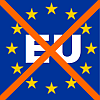Latest News for: sunless tanning
Edit
 Victoria Advocate
01 Nov 2024
Victoria Advocate
01 Nov 2024
November is National Healthy Skin Month: Pure Glow Encourages Sunless Tanning to Support Skin Health
Edit
goGLOW opens first Houston location
Houston Leader 28 Oct 2024
“With goGLOW's main focus being healthy skin, Houstonians will feel the empowering difference of our sunless tans,” said Melanie Richards, Founder and CEO of goGLOW.
Edit
Score double discounts on stars’ go-to brands at Nordstrom’s big clearance sale
New York Post 10 Oct 2024
99% of the time I’d say it’s because they got a good spray tan,” Alysa once told us, saying the sunless glow functions like a “filter on your skin” to “help tone, reduce appearance of cellulite blur imperfections.” BUY NOW $42.00 $33.60.
Edit
Melanoma in Greece – How to protect your skin from the sun
Greek City Times 14 Aug 2024
One of the largest organs of the human body is the skin ... How do we protect our skin? ... Avoid tanning beds. Tanning beds emit UV radiation similar to the sun and may increase the risk of skin cancer. If you want to tan, choose sunless tanning products.
Edit
Suddenly Sunless Celebrates 11 Years Of Glowing Success With New Solutions In Mckinney, Texas
MENA FN 06 Aug 2024
(MENAFN - GetNews) McKinney, Texas - Suddenly Sunless, McKinney's premier spray tanning service, is thrilled to celebrate 11 fabulous years of giving the community a radiant glow! In honor of ... .
Edit
Hope's Corner: Summertime Blues
The Dickinson Press 29 Jul 2024
Most people wait eagerly for summer. They daydream about days in the sun, picnic lunches in parks, and evenings sitting outside under the stars ... There was sleeping late in the morning ... Instead of tanning in the sun, we used Coppertone QT sunless tanner.
Edit
Save on the self tanner stars swear by at the Nordstrom Anniversary Sale
New York Post 19 Jul 2024
Edit
Shop under-$50 early Prime Day beauty deals on celeb-loved skincare, more
New York Post 10 Jul 2024
Page Six may be compensated and/or receive an affiliate commission if you buy through our links ... Crest 3D Whitestrips. Crest ... BUY NOW $45.99 $29.99 ... Cosrx ... Olaplex No ... St. Tropez Self Tan Express Mousse ... For sunless tans, stars like Ashley Graham turn to St.
Edit
Does Beer Really Help You Tan Fast, Or Is That B.S.?
Huffington Post 07 Jul 2024
“If all of those other concerns are out the window and people want to get a tan, putting beer on their skin may actually do the opposite,” Rahman noted.If you want a summer glow, use a bronzer or sunless tanner.
Edit
Are tanning beds safe? What dermatologists want you to know
Usatoday 03 Jul 2024
As more and more people learn that tanning the old-fashioned way — in the sun — is dangerous, the search grows for alternative ways of achieving a summer glow ... Sunless tanning products are the "only safe way to achieve a tan," Zubritsky says.
Edit
Inside Rudy Giuliani's bankruptcy spending: $100 on pizza, $4 polyester ties, and 'deep bronze' tanning lotion
Business Insider 27 Jun 2024- 1
- 2
- Next page »